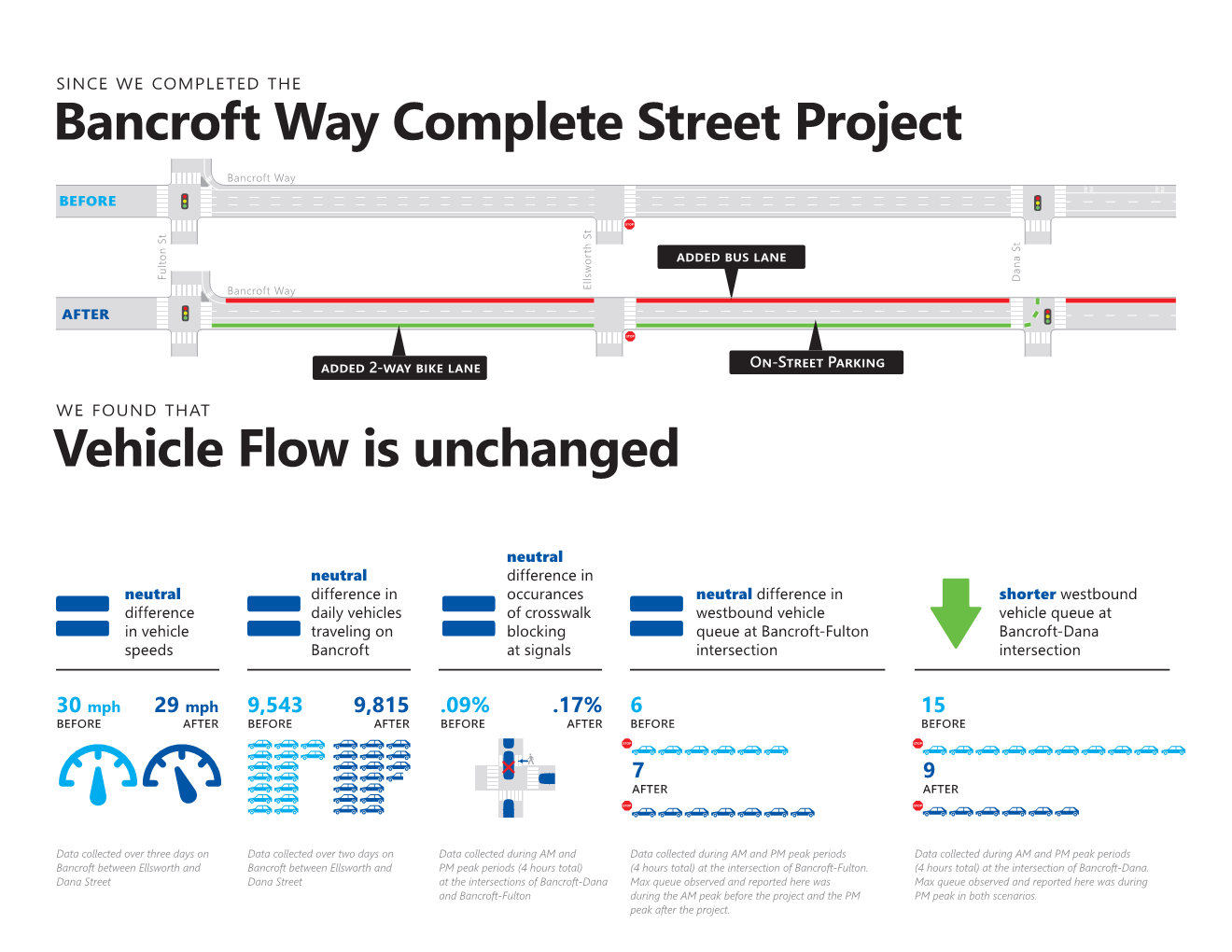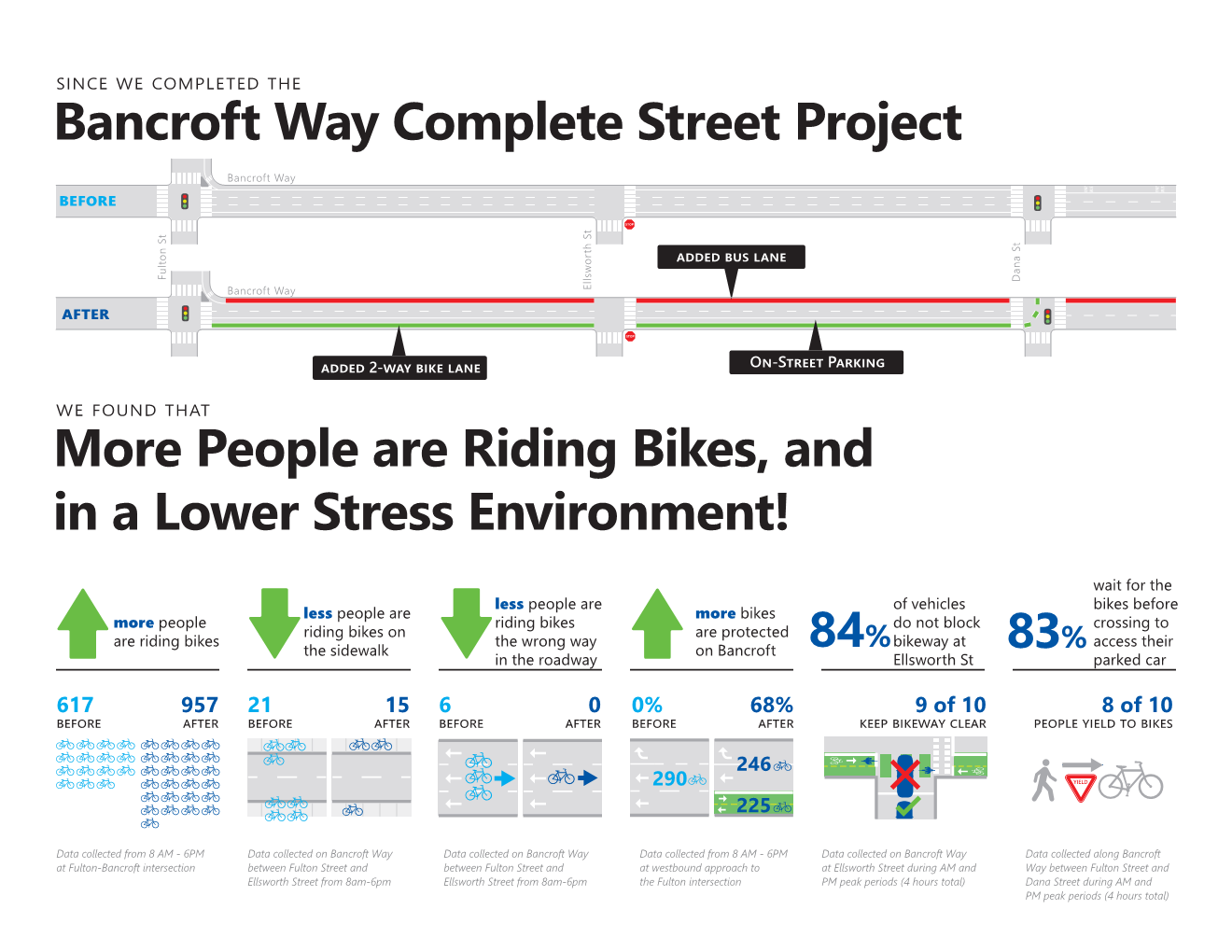Complete Streets
Evaluating Success
Safety is a top concern in most communities, and innovative complete streets design can help improve safety, as well as access and mobility for all. For example, a protected bike lane design is rarely just about bikes. This complete street design element often includes surrounding benefits for those walking and taking transit, such as safety enhancements at crosswalks, better bus stop waiting areas, or transit-only lanes to reduce bus travel time. Complete streets have become a major area of our practice, and as standards for the design of pedestrian-and bicycle-friendly intersections and streets evolve, the need for evaluating new complete streets in a consistent manner grows.
We recently teamed with the City of Berkeley to test multiple alternatives for a complete street corridor along the south side of the UC Berkeley campus. The award-winning design stretches from Dana Street to Fulton Street along Bancroft Way and has acted as a pilot project for the city as they consider additional upgrades to the corridor and elsewhere in the city, such as signal modifications and sidewalk improvements. Constructed at the end of 2017 through the city’s repaving program, the project includes a two-way, parking-protected bikeway, dedicated transit lane, and modifications to intersections facilitating transitions to the UC Berkeley campus and Fulton Street bike lane.
To help the City of Berkeley understand if the desired outcomes were met through the pilot project and whether the design should be expanded, we collected and analyzed performance data for the corridor. We evaluated pedestrian and bicycle safety, traffic flow, and loading compliance both before and after implementation. The city intends to use the results of the study to determine what additional improvements are appropriate and highlight the successes of the project. Each visual below addresses an element of the corridor and presents before and after statistics.
If consistent data collection methods and outcomes continue to be documented in a variety of settings on a more widespread scale, communities will be better positioned to understand and communicate design impacts soon after implementation. Using comparative metrics that are appropriate for complete streets projects, beyond traditional level of service and traffic volumes, and communicating the results with clear, illustrative methods can allow agency staff to clearly inform the public and decision makers about project outcomes. Practitioners will also be better equipped to confidently recommend appropriate proven solutions for safer, more consistent complete street designs that make traveling more desirable.
Learn more by contacting one of our industry experts.
Quick Links
© 2017 – 2024 Fehr & Peers. All rights reserved.




